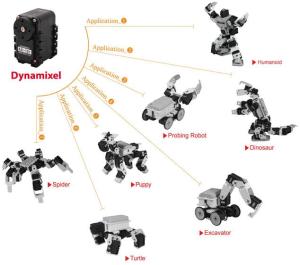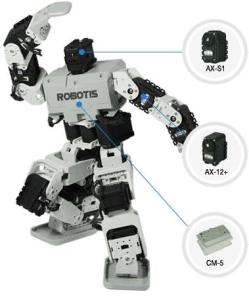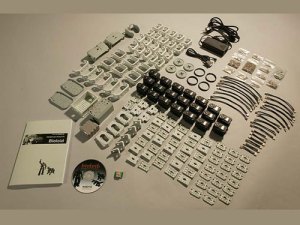What is Knowledge Management?
There are numerous definitions of KM, quite literally scores of them. Indeed, Professor Michael Sutton [2008] of the Gore School of Business at Westminster College reported at the ICKM (International Conference on Knowledge Management) meeting in 2008 that he had assembled a library of more than 100 of them
A discipline that promotes an integrated approach to identifying, capturing, evaluating, retrieving, and sharing all of an enterprise’s information assets. These assets may include databases, documents, policies, procedures, and previously uncaptured expertise and experience in individual workers
Upon being asked at a cocktail party to define KnowledgeManagement, one may offer an apt
definition, comprised of primarily 3 distinct parts:
1) Classic Library and Information Science and Information Retrieval.
2) ICT, Information and Communication Technology.
3) HR,HumanRelations, changing the culture of the organization to facilitate knowledge sharing and use.
The history and development of Knowledge Management
The appearance of the term “KnowledgeManagement” is a rather recent phenomenon. It appeared operationally only in the mid-1990s. The earliest print reference appears to have been used firstin the context of library and information work. In the article entitled “Where Did Knowledge Management Come From” written in 1999, Prusak states that KMfirst appeared “about seven years ago,” i.e., in 1992, and describes a conference in Boston in 1993 as “a good milestone to mark the beginning of the knowledge management time-line” [Prusak, L., 1999].
The earliest instances of KM, as the term is understood today, derive from the consulting world, from which the principles of KMeventually spread to other disciplines.The consulting firms quickly realized the potential of the Intranet flavor of the Internet for linking together their own geographically dispersed knowledge based organizations. They then understood that the expertise they had gained was a product that could be sold to other organizations. That product needed a name, and the name chosen, or at least arrived at, was Knowledge Management. Another aspect of KM’s relationship to ICT is that KM emerged at approximately the same time as the cost of personal computers dropped to the degree that PC’s became cost effective and affordable desktop tools for the ordinary person.Today there are numerous voices critical of the name “Knowledge Management.” These objections arise from a perceived inadequacy of the term Knowledge Management, which detractors say lacks strong description while conflicting with the concept that one cannot inherently manage knowledge.
Intellectual capital develops and declines
The first blush of enthusiasm for Intellectual Capital centered on quantifying and measuring it [Edvinsson, L., 1994, Edvinsson and Malone, 1997b].Measuring such an ill-defined commodity as intellectual capital, however, proved to be difficult. Clearly, if it was so important, it needed to be measured. However, as the difficulty of measuring such an amorphous commodity as information, much less knowledge, became apparent to the business community, the enthusiasm for intellectual capital decreased, as evidenced by the reduced volume of related publications.
The Stages of Knowledge Management development
In observing the development of KMas practiced, described, and discussed at professionalmeetings,
conferences, and trade shows, one can observe three clear stages.
- Stage One. The initial stage of KM was driven primarily by information technology, or IT. Organizations, particularly the large international consulting organizations, realized that their stock in trade was information and knowledge. These groups also realized that internal communication and information sharing was often lacking. If knowledge could be shared more effectively, then the efficiency would increase business and the bottom line would improve. When the internet emerged, they realized that the intranet flavor of the internet provided a valuable tool to accomplish knowledge coordination and sharing.The first stage ofKMfocused on the deployment of new technology to accomplish these information sharing goals
- Stage Two. The second stage of KM can be described simply as adding the recognition of the importance of the human and cultural dimensions.The second stage might be described as the, ’if you build it they will come’ is a fallacy stage. In other words, the recognition that building KM systems alone is not sufficient and can easily lead to quick and embarrassing failure if human factors are not sufficiently taken into account.
- Stage Three. The third stage was the awareness of the importance of content, and, in particular, an awareness of the importance of the retrievability and, therefore, of the importance of the arrangement, description, and structure of that content. Since a good alternate description for the second stage of KM is the “it’s no good if they don’t use it” stage, then in that vein, perhaps the best description for the new third stage is the “it’s no good if they can’t find it” stage, or perhaps “it’s no good if they try to use it, but can’t find it
Knowledge Management AS The extension of the succeful & Environment
The principles and practices of KM have developed in a very conducive environment, given that in this post-industrial information age, an increasingly larger proportion of the population consists of information workers. The role of the researcher, considered the quintessential information worker, has been studied in depth with a focus on identifying environmental aspects that lead to successful research
Background Bibliographic
Analysis
Articles about KM were and are being published in the fields of computer science, information systems,management, engineering, communication, and library and information science. Ponzi’s research on knowledge management publications is deep and comprehensive, but limited in that his latest results are from 2001.The significance of the KMgrowth pattern becomesmuchmore apparent when one compares it with the pattern of other major business enthusiasms of recent years. Below (Figure 2.2) are the literature growth patterns of three of those major business enthusiasms.The difference is dramatic. Quality Circles, Business Process Engineering, and Total Quality Management all show an almost identical pattern of approximately five years of dramatic, exponential, growth, then they peak and fall off to near nothing almost as quickly. KM, by contrast, has that same period of five years of exponential growth, 1994 to 1999, but in the decade since it has not declined, rather it has continued to grow steadily and consistently. All the hallmarks are here of a rather permanent development.
Theorizing Knowledge in
Organizations
This chapter provides an overview of the development of research findings and theories related to
knowledge management.In order to better understand the notion of “managing” knowledge, there is a need to better understand what it is about knowledge flow in organizations that lends itself to any form of management.In the resource view, knowledge is conceptualized as an object that exists largely in formal documents or online artifacts amenable to organizing andmanipulation.The process view, on the other hand, largely emphasizes the emergent nature of knowledge that is often embedded within a person or within organizational routines, activities, and outcomes, or arises from the interplay of persons and existing information or knowledge.
Knowledge as recources and process
Through the resource perspective, organizations view knowledge as a fundamental resource in addition to the traditional resources of land, labor, and capital. It is held that the knowledge that the firm possesses is a source of sustainable competitive advantage, and is, accordingly, regarded as a strategic resource of the firm in need of management attention. In the course of innovation and production of goods and services, information and knowledge are regarded as central inputs to organizational processes. Learning and knowledge are then seen as direct outcomes of activities performed commensurate with the organization’s central mission and core competencies.
Interactions for knowledge creation
While knowledge itself may be perceived as a resource, its creation occurs through human interactions, whether physical or virtual. For example, for knowledge to emerge from within a group, interactions that occur among its members shape the knowledge that emerges from the mutual engagement and participation of the group members.Nonaka and Takeuchi [1995] in their seminal work have also alluded to knowledge creation as a process of socialization that is predicated on the need for direct social interactions. Nonaka and Takeuchi are the most prominent theorists in the knowledge management domain. Their SECI (Socialization, Externalization, Combination, Internalization) model posits aspiral-type process in which knowledge goes from within a person’s own knowledge store to a more explicit state that can be shared socially with others.
Activity as Context
instead of examining knowledge per se, Blackler, F. [1995] and others propose that attention should focus on systems through which knowing and doing are achieved. By suggesting an alternative stance of knowing as mediated, situated, provisional, pragmatic, and contested, as opposed to a more classic viewof knowledge as embodied, embrained, encultured, and encoded,Blackler recognizes that knowledge permeates activity systems within the organization.





